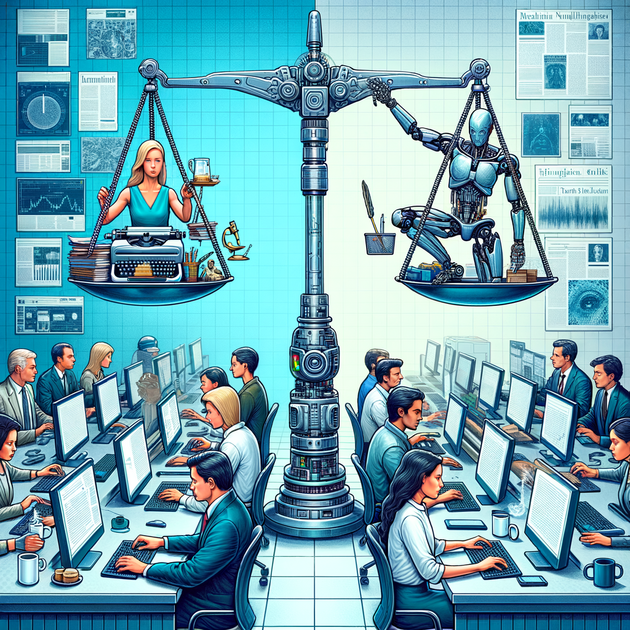The Ethical Dilemma of AI in Journalism: A Double-Edged Sword
Imagine waking up to a world where news stories are generated by intelligent algorithms instead of human journalists. What could possibly go wrong? This isn’t a futuristic scenario but a present-day reality that has already caused ripples across the journalism industry.
The Promise of AI in Journalism
AI technologies, such as Natural Language Processing (NLP) and machine learning, offer revolutionary promises for journalism. These technologies can efficiently sift through vast amounts of data, uncover hidden trends, and even personalize news content for individual readers.
For example, AI systems are already being used to generate real-time financial reports, sports summaries, and weather updates, providing timely and accurate information to the public.
The Dark Side: Ethical and Moral Concerns
However, the use of AI in journalism comes with a set of ethical and moral dilemmas. One of the most pressing issues is the potential for fabricating quotes and misinformation. AI’s ability to generate human-like text can be both a blessing and a curse.
Recent Case Study: A Wyoming reporter resigned after it was discovered that they had used AI to fabricate quotes, compromising the integrity of the news outlet. This incident serves as a cautionary tale about the darker aspects of AI in journalism.
The Erosion of Trust
The core value of journalism lies in its trustworthiness. Readers rely on journalists to provide accurate and honest information. When AI-generated content includes fabricated elements, it erodes that trust and jeopardizes the credibility of the entire news industry.
Accountability and Transparency
Another critical issue is accountability. Who is held responsible when AI-generated content is misleading or incorrect? Is it the developer who created the algorithm, the journalist who used it, or the publication that published it? The lack of clear accountability frameworks makes it challenging to address these ethical dilemmas effectively.
Real-World Examples and Implications
AI in Fact-Checking
Despite these challenges, AI can also be a powerful tool for fact-checking. Organizations like Full Fact are leveraging AI to verify the accuracy of news stories in real-time. By cross-referencing data from multiple sources, AI can help journalists identify discrepancies and ensure the reliability of their reports.
The Future of AI and Journalism: Striking a Balance
Finding the right balance between leveraging AI for its benefits and mitigating its risks is crucial. Ethical guidelines and industry standards need to evolve to address these issues.
Education and Training
Journalists must receive adequate education and training to understand the capabilities and limitations of AI. This will enable them to use these technologies responsibly and maintain the integrity of their work.
Regulatory Frameworks
Policymakers must develop regulatory frameworks that hold all parties accountable. These regulations should ensure transparency in AI-generated content and protect the public from misinformation.
Collaborative Efforts
Collaboration between technologists and journalists is essential. By working together, they can create AI tools that enhance journalistic practices while safeguarding ethical standards.

A Call to Action
The ethical use of AI in journalism is not just a technological challenge but a societal one. As consumers of news, we must demand transparency and accountability. As developers and journalists, we must strive to uphold the integrity of the Fourth Estate.
